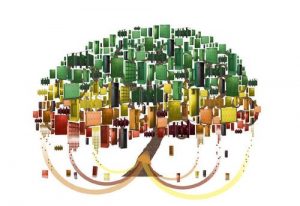Sustainability is one of the most important aspects to building managers, whether you’re about to break ground on a new facility, or you’re looking for ways to make your current facility more efficient. Green architecture has become increasingly popular since it helps reduce carbon emissions, as well as show a massive drop in energy consumption. The goal is to leave as little of a carbon footprint as possible, so finding ways to make your facility more sustainable is crucial.
The Importance of Sustainability & Green Architecture
Most buildings, skyscrapers, and high-risers you see that are made of glass and steel may appear alluring and awe-inspiring, but those buildings certainly use up a lot of energy, which maximizes their carbon emissions. Tall glass and steel structures require significant energy to keep the interior of the building at the optimal temperature, depending on the weather and season. According to The Economist, “In America, buildings account for 65% of electricity consumption, 36% of total energy use, and 30% of greenhouse-gas emissions.”
The ultimate goal with green architecture is to drastically reduce these numbers to a more manageable and sustainable level. By getting started now, we can work towards a greener future with less emissions and energy use collectively. Using these different materials is the first step towards a green and sustainable future.
Utilizing the Best Green Building Materials
The first step towards making a green facility is by utilizing sustainable materials. You’ll want to sort through materials that can help your building maintain its optimal temperature without having to kick the HVAC system into high gear. Certain woods and rock types make for ideal construction material due to their thermal mass. Utilizing recycled material can also have its benefits because it’s reducing waste while getting more use out of a previously discarded material.
How to Make Your Current Facility Greener
If your facility was already constructed before the idea of green architecture really caught on, don’t fret. There are  still steps that can be taken to increase the sustainability of your facility. A major area that you can focus on is your facility’s restrooms. More importantly, replacing your standard partitions with a more sustainable material, like HDPE plastic.
still steps that can be taken to increase the sustainability of your facility. A major area that you can focus on is your facility’s restrooms. More importantly, replacing your standard partitions with a more sustainable material, like HDPE plastic.
These green building materials can help retain the heat in your restroom while combating the elements, such as humidity and moisture. They’re durable, scratch-resistant, and non-absorbent, so you won’t spend a lot of time and money on maintenance. They’re made from recycled material and they’re backed by a 25-year warranty, so you won’t have to shell out a small fortune to replace them.
Getting Started on Making Your Facility Sustainable
By using HDPE plastic in your facility, you can start small and work towards a greener future for your building. This plastic will outlast your current toilet partitions in your restroom, and they’ll incur less damage and won’t have any mold growth due to their strong and reliable structure. If your facility has lockers or storage compartments, you can replace the metal with HDPE plastic lockers, which will provide secure storage and durability while increasing your buildings sustainability.
Want to learn about how HDPE plastic and other materials can help make your facility more sustainable? Download this eBook, Sustainable Building Products: How to Make Your Facility Eco-Friendly from Top to Bottom, from your friends at Scranton Products.
